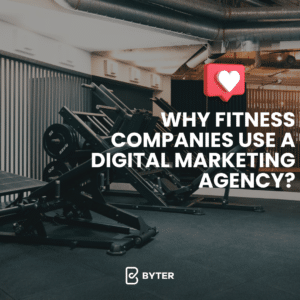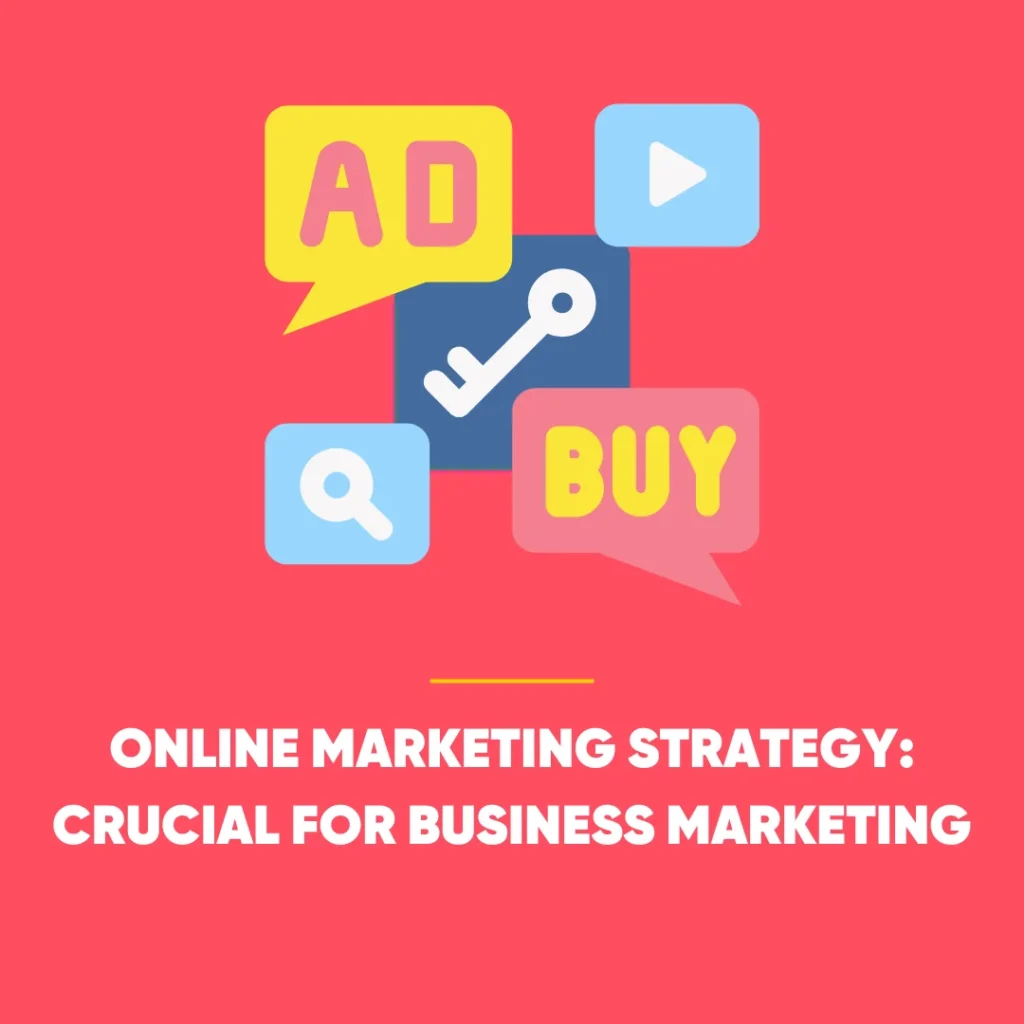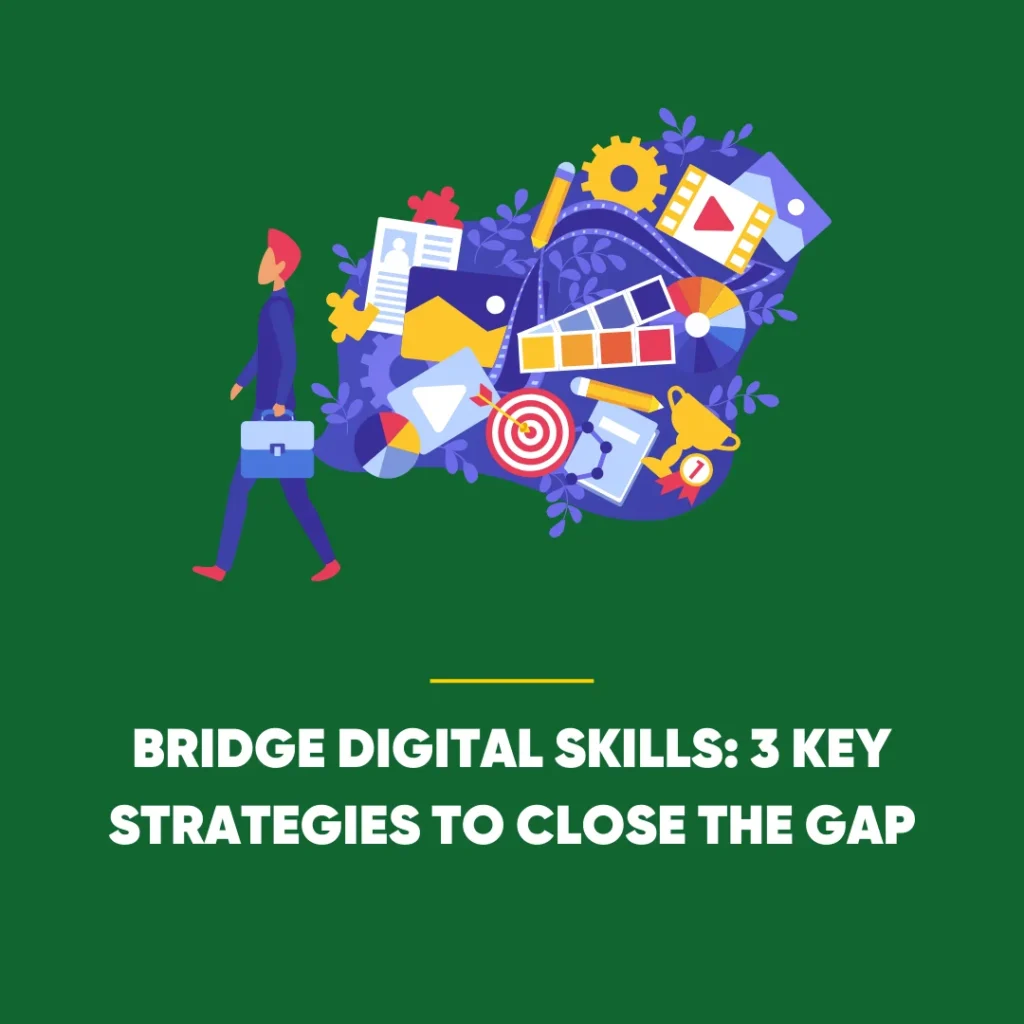Why social media is important for online presence?
Social media has transformed the way businesses and individuals communicate and interact online. With over 4.2 billion active social media users worldwide, it has become a powerful tool for building an online presence and engaging with audiences across the globe.
Social media allows brands to connect with their target audience on a more personal level, creating a space for two-way communication and relationship building. By establishing a strong presence on social media, businesses can increase their visibility, drive traffic to their website, and promote their products or services to a wider audience.
In addition to these benefits, social media also provides an opportunity for brands to demonstrate their expertise and establish themselves as industry leaders. By sharing valuable content and engaging with followers, businesses can build credibility and trust with their audience, leading to increased brand loyalty and customer retention.
Overall, social media is an essential component of any online marketing strategy. It offers a cost-effective way to build brand awareness, drive website traffic, and engage with customers, making it a powerful tool for boosting online presence and achieving business goals.
What we will cover
In this post, we will provide a comprehensive guide on how to use social media to boost your online presence. We will cover key strategies and tactics that can help businesses and individuals establish a strong social media presence, engage with their target audience, and increase their visibility online. Specifically, we will discuss how to identify your target audience, choose the right social media platforms, develop a social media content strategy, engage with followers, leverage influencer marketing, and analyse social media metrics to make data-driven decisions. By the end of this post, readers will have a clear understanding of how social media can be used to improve their online presence and the specific steps they can take to achieve their goals.
Identify Your Target Audience
Identifying your target audience is a critical step in creating an effective social media strategy. Your target audience is the group of people who are most likely to be interested in your products or services, and understanding their needs, interests, and preferences is key to creating content that resonates with them.
By identifying your target audience, you can create a more focused and effective social media strategy that speaks directly to their needs and interests. This can lead to increased engagement, a stronger following, and ultimately, increased conversions and revenue.
Understanding your target audience
Ican help you choose the right social media platforms to reach them. Different social media platforms have different demographics and user behaviours, so it’s important to choose the platforms that your target audience is most likely to use and engage with.
Finally, identifying your target audience can also help you tailor your content and messaging to their unique interests and preferences. By creating content that speaks directly to their needs and interests, you can establish a stronger connection with your audience and build a more loyal following.
Overall, identifying your target audience is a crucial step in creating a successful social media strategy. By understanding your audience’s needs and preferences, you can create content that resonates with them, choose the right platforms to reach them, and ultimately build a stronger online presence and achieve your business goals.
Identifying your target audience on social media
Conduct Market Research
Conducting market research is an essential step in identifying your target audience. Research your industry, competitors, and the demographics of your current customers to identify common characteristics.
Analyse Your Website Analytics
Your website analytics can provide valuable insights into your audience, including their age, location, and interests. Use this data to create customer personas that represent your ideal audience.
Monitor Social Media Analytics
Social media platforms provide insights into your followers’ demographics, interests, and behaviours. Use this data to gain a better understanding of your audience and tailor your content accordingly.
Leverage Audience Insights Tools
Many social media platforms offer audience insights tools that can help you understand your audience’s demographics, interests, and behaviours. Use these tools to gain a more comprehensive view of your target audience.
Survey Your Customers
Surveying your customers can provide valuable feedback on their preferences, needs, and behaviours. Use this information to refine your target audience personas and create content that resonates with them.
Analyse Competitor Audiences
Analysing your competitors’ social media audiences can provide valuable insights into their target audience. Use this information to refine your own target audience and create content that differentiates your brand from competitors.
why it’s important to choose the right platforms for your brand
Choosing the right social media platforms for your brand is essential for creating an effective social media strategy. Each platform has its own unique features, audience demographics, and user behaviours, and selecting the wrong platforms can result in wasted time, resources, and missed opportunities.
By choosing the right platforms for your brand, you can reach your target audience where they are most active and engaged, increasing the likelihood of building a strong following and achieving your business goals. Additionally, choosing the right platforms can help you create content that is tailored to the platform’s specific features and user behaviours, improving engagement and interaction with your audience.
Choosing the wrong platforms, on the other hand, can result in low engagement, low ROI, and a lack of brand visibility. This can be particularly detrimental for small businesses and startups that may not have the resources to invest in multiple social media platforms.
Ultimately, selecting the right social media platforms for your brand requires careful consideration of your audience demographics, brand goals, and available resources. By choosing the platforms that align with your brand and audience, you can create an effective social media strategy that maximises engagement, grows your following, and achieves your business goals.
Popular social media platforms and their audiences
There are a multitude of social media platforms available today, each with its own unique audience demographics, user behaviours, and features. Here is an overview of some of the most popular social media platforms and their respective audiences:
Facebook is the largest social media platform, with over 2.8 billion active users. Its user base is diverse, but the platform is most popular among adults aged 25-54. Facebook is used primarily for social networking, sharing news, and keeping up with friends and family.
Instagram is a visual platform that focuses on sharing photos and videos. It has over 1 billion active users, with the majority of its audience aged 18-34. Instagram is popular among businesses and influencers looking to build their brand through visual content.
Twitter is a platform for sharing short, real-time updates known as tweets. It has over 330 million active users, with the majority aged 18-29. Twitter is popular among news outlets, politicians, and celebrities for sharing real-time updates and engaging with followers.
LinkedIn is a professional networking platform that is primarily used for job searching, recruiting, and business networking. It has over 740 million active users, with the majority of its audience aged 25-54. LinkedIn is popular among professionals and businesses looking to network and build their brand in a professional setting.
TikTok
TikTok is a short-form video platform that is popular among young adults and teens. It has over 1 billion active users, with the majority aged 16-24. TikTok is popular among businesses and influencers looking to create engaging and entertaining short-form video content.
Tips for choosing the right platforms for your brand
Choosing the right social media platforms for your brand can be challenging, but there are several tips to help you select the platforms that are best suited for your brand and target audience:
Identify Your Target Audience
Understanding your target audience is critical for choosing the right social media platforms. Analyse your audience demographics and user behaviours to determine which platforms they are most active on.
Consider Your Brand Goals
Your social media goals should align with your overall brand goals. Consider what you want to achieve through social media, such as building brand awareness, increasing website traffic, or generating leads, and choose the platforms that can help you achieve these goals.
Evaluate Platform Features
Each social media platform has unique features that can benefit your brand. For example, Instagram is known for visual content, while Twitter is known for real-time updates. Evaluate each platform’s features and determine which ones are best suited for your brand.
Analyse Your Competitors
Analysing your competitors’ social media presence can provide valuable insights into which platforms are most effective for your industry. Evaluate which platforms your competitors are active on and assess their engagement levels.
Consider Resource Constraints
Managing multiple social media platforms can be time-consuming and resource-intensive. Consider the resources you have available, such as time, budget, and staff, and choose the platforms that align with your available resources.
Test and Iterate
Social media is constantly evolving, and what works today may not work tomorrow. Test different platforms and strategies, and iterate based on your results to determine which platforms are most effective for your brand.
Why a content strategy is important for social media success
A content strategy is a crucial component of social media success. It involves planning, creating, and sharing content that aligns with your brand goals and resonates with your target audience. Here are some reasons why a content strategy is important for social media success:
Builds Brand Awareness
A content strategy helps to build brand awareness by establishing your brand’s voice, tone, and messaging. Consistently creating and sharing content that aligns with your brand values can help to increase brand recognition and awareness.
Engages Your Audience
A content strategy helps to engage your audience by providing content that is valuable and relevant to their interests. This can lead to increased engagement, such as likes, shares, and comments, and ultimately, a stronger social media presence.
Establishes Credibility
A content strategy can help to establish your brand’s credibility and expertise by providing valuable information and insights to your audience. This can help to build trust and credibility with your audience, leading to increased brand loyalty and customer retention.
Increases Website Traffic
A content strategy can help to drive traffic to your website by sharing links to your blog posts, product pages, or other relevant content. This can help to increase your website’s visibility and ultimately, drive conversions.
Saves Time and Resources
A content strategy can help to save time and resources by streamlining your content creation process. By planning and creating content in advance, you can ensure that your content is consistent and on-brand, while also freeing up time to focus on other aspects of your social media strategy.
Tips for creating a content strategy that aligns with your brand goals and audience interests
Creating a content strategy that aligns with your brand goals and audience interests is essential for social media success. Here are some tips for creating a content strategy that resonates with your audience and achieves your business objectives:
Define Your Objectives
Start by defining your social media objectives, such as increasing brand awareness, driving website traffic, or generating leads. Your content strategy should align with these objectives and help you achieve them.
Analyse Your Audience
Analyse your audience demographics, interests, and behaviours to determine what type of content they are most likely to engage with. This will help you create content that resonates with your audience and increases engagement.
Choose Your Content Types
Determine what type of content you want to create, such as blog posts, infographics, videos, or user-generated content. Choose content types that align with your brand goals and resonate with your audience.
Develop a Content Calendar
Develop a content calendar that outlines the topics, formats, and publishing schedule for your content. This will help you stay organised and ensure that your content is consistent and on-brand.
Optimise Your Content
Optimise your content for social media by using relevant keywords, hashtags, and images. This will help to increase visibility and engagement with your content.
Measure Your Results
Measure the results of your content strategy by tracking engagement, reach, and conversions. Use this data to make data-driven decisions and optimise your content strategy over time.
Content formats that perform well on social media
Creating content that performs well on social media requires a deep understanding of your target audience and the specific platforms you are using. Here is an overview of content formats that tend to perform well on social media:
Videos
Videos are a popular and engaging format that performs well on social media. Short-form videos, such as Instagram Reels or TikTok videos, are particularly popular among younger audiences. Longer-form videos, such as YouTube videos, can also be effective for providing in-depth information and building brand authority.
Images
Images are a powerful way to grab attention and convey information quickly on social media. High-quality, visually appealing images can help to increase engagement and build brand recognition.
Infographics
Infographics are a visually compelling way to present complex information or data. They can help to increase engagement and provide valuable information to your audience.
User-Generated Content
User-generated content is content that is created by your audience, such as customer reviews, photos, or testimonials. This type of content can help to build social proof and increase trust in your brand.
Blog Posts
Blog posts are an effective way to provide in-depth information and establish your brand as an authority in your industry. Sharing blog posts on social media can help to drive traffic to your website and increase engagement.
Interactive Content
Interactive content, such as quizzes, polls, and surveys, can be a fun and engaging way to increase audience participation and encourage sharing.
Why engagement is important for building a strong online presence
Engagement is a critical component of building a strong online presence. It refers to the interactions and connections that your brand has with your audience, such as likes, comments, shares, and direct messages. Here are some reasons why engagement is important for building a strong online presence:
Increases Brand Awareness
Engagement can help to increase brand awareness by expanding your reach and visibility. When your followers like, comment, or share your content, it can be seen by their followers, extending your brand’s reach.
Builds Brand Loyalty
Engagement can help to build brand loyalty by fostering a sense of community and connection with your audience. When your followers engage with your content, it shows that they are interested in your brand and value what you have to say.
Provides Valuable Feedback
Engagement can provide valuable feedback and insights into your audience’s preferences, interests, and behaviours. By monitoring engagement metrics, such as likes, comments, and shares, you can determine what content resonates with your audience and adjust your strategy accordingly.
Increases Conversions
Engagement can lead to increased conversions by building trust and credibility with your audience. When your audience engages with your content and sees that others are interested in your brand, it can increase their likelihood of making a purchase or taking another desired action.
Boosts Algorithmic Reach
Engagement can also boost your algorithmic reach on social media platforms. When your content receives high levels of engagement, it signals to the platform’s algorithm that your content is relevant and valuable to your audience, which can lead to increased visibility in their newsfeeds.
Tips for engaging with followers on social media, including responding to comments and messages, hosting Q&As, and creating polls and surveys
Engaging with followers on social media is crucial for building a strong online presence and fostering a sense of community around your brand. Here are some tips for engaging with followers on social media:
Respond to Comments and Messages
Responding to comments and messages shows your followers that you value their feedback and are interested in their opinions. Make sure to respond in a timely and personalised manner, and consider using humour or emojis to add a personal touch.
Host Q&As
Hosting a Q&A session on social media is a great way to engage with your followers and provide them with valuable information. Encourage followers to submit their questions in advance and make sure to answer them in a clear and concise manner.
Create Polls and Surveys
Polls and surveys are a fun and interactive way to engage with your followers and gather feedback on your products or services. Consider asking questions that are relevant to your brand and that will provide you with valuable insights into your audience’s preferences and behaviours.
Share User-Generated Content
Sharing user-generated content, such as customer reviews or photos, can help to build social proof and increase engagement. Make sure to credit the user and ask for their permission before sharing their content.
Share Behind-the-Scenes Content
Sharing behind-the-scenes content, such as photos or videos of your team or your workspace, can help to humanise your brand and build a personal connection with your audience.
Participate in Social Media Trends and Challenges
Participating in social media trends and challenges can help to increase engagement and visibility for your brand. Make sure to choose trends and challenges that are relevant to your brand and that align with your values and messaging.
how influencer marketing can boost your online presence
Influencer marketing is a popular marketing strategy that involves partnering with influential individuals on social media to promote your brand or product. Here are some ways in which influencer marketing can boost your online presence:
Increases Brand Awareness
Influencers have large followings on social media and can help to increase brand awareness by promoting your brand or product to their followers. This can lead to increased visibility, reach, and engagement with your target audience.
Builds Credibility and Trust
Influencers are often seen as experts in their niche and can help to build credibility and trust with their followers. By partnering with influencers who align with your brand values and messaging, you can leverage their credibility and build trust with your target audience.
Provides Valuable Content
Influencers can provide valuable content that resonates with your target audience and promotes your brand or product. This content can take the form of social media posts, blog posts, videos, or other formats, and can help to increase engagement and drive conversions.
Reaches New Audiences
Influencers often have followers who may not be familiar with your brand or product. Partnering with influencers can help to reach new audiences and expand your reach beyond your existing customer base.
Increases Conversions
Influencer marketing can lead to increased conversions by driving traffic to your website, increasing product sales, or promoting specific calls to action. By leveraging the influence and credibility of influencers, you can increase the likelihood that your target audience will take the desired action.
Tips for finding and partnering with influencers on social media
Finding and partnering with influencers on social media can be a highly effective way to boost your online presence and reach a wider audience. Here are some tips for finding and partnering with influencers on social media:
Define Your Objectives
Start by defining your influencer marketing objectives, such as increasing brand awareness or driving product sales. This will help you to determine the type of influencers you want to partner with and the metrics you want to track.
Identify Your Target Audience
Identify your target audience and determine the social media platforms they are most active on. This will help you to identify influencers who have a strong following among your target audience.
Research Potential Influencers
Conduct research to identify potential influencers who align with your brand values and messaging. Look for influencers who have a large following, high engagement rates, and a track record of successful partnerships.
Reach Out to Influencers
Once you have identified potential influencers, reach out to them with a personalised message that explains why you want to partner with them and how your brand can benefit from the partnership. Be clear about your objectives, expectations, and compensation.
Collaborate on Content Creation
Collaborate with influencers on content creation to ensure that the content aligns with your brand values and resonates with your target audience. This can take the form of social media posts, blog posts, videos, or other formats.
Track Metrics and Optimise
Track metrics such as engagement, reach, and conversions to determine the effectiveness of your influencer marketing campaigns. Use this data to optimise your strategy over time and make data-driven decisions.
Why it’s important to track your social media metrics and adjust your strategy accordingly
Tracking social media metrics is an essential part of any social media strategy. Social media metrics are data points that provide insights into how your social media content is performing and how it is contributing to your business goals. Here are some reasons why it’s important to track your social media metrics and adjust your strategy accordingly:
Provides Insights into Audience Behaviour
Social media metrics can provide valuable insights into your audience’s behaviour, such as their engagement rates, interests, and demographics. By analysing these metrics, you can adjust your content strategy to better align with your audience’s preferences and increase engagement.
Helps You Measure Success
Social media metrics can help you measure the success of your social media strategy and determine whether you are achieving your business goals. By tracking metrics such as website traffic, leads, and conversions, you can determine the ROI of your social media efforts and make data-driven decisions.
Allows You to Optimise Your Strategy
Tracking social media metrics can help you identify areas where your social media strategy may be falling short and optimise your strategy accordingly. For example, if you notice that your engagement rates are low, you can adjust your content strategy to include more interactive or visually appealing content.
Helps You Stay Ahead of Trends
Social media is constantly evolving, and tracking metrics can help you stay ahead of trends and adjust your strategy accordingly. By analysing metrics such as platform usage and engagement rates, you can identify emerging trends and adjust your strategy to take advantage of them.
Provides Accountability
Social media metrics can provide accountability for your social media strategy and ensure that you are achieving your business objectives. By tracking metrics and sharing them with stakeholders, you can demonstrate the value of your social media efforts and make data-driven decisions.
Tips for analysing your social media performance and making data-driven decisions
Analysing your social media performance is essential for making data-driven decisions that can help you optimise your social media strategy and achieve your business objectives. Here are some tips for analysing your social media performance and making data-driven decisions:
Set Measurable Goals
Start by setting measurable goals for your social media strategy. These goals should be aligned with your business objectives and should be specific, measurable, attainable, relevant, and time-bound.
Identify Key Metrics
Identify the key metrics that will help you measure progress towards your social media goals. These metrics may include engagement rates, reach, website traffic, leads, conversions, or other relevant data points.
Use Analytics Tools
Use social media analytics tools, such as Facebook Insights or Twitter Analytics, to track your social media metrics and analyse your performance. These tools can provide valuable insights into audience behaviour, content performance, and platform usage.
Identify Trends and Patterns
Identify trends and patterns in your social media performance by analysing your metrics over time. Look for trends in engagement rates, platform usage, or content performance that may indicate opportunities for improvement.
Experiment with A/B Testing
Experiment with A/B testing to determine the most effective strategies for your social media content. Test different variations of your content, such as different headlines or images, and analyse the results to determine which strategies are most effective.
Use Data to Make Decisions
Use your social media data to make data-driven decisions that can help you optimise your strategy and achieve your business objectives. Use your insights to adjust your content strategy, targeting, or other aspects of your social media strategy.
Conclusion
In conclusion, social media can be a powerful tool for boosting your online presence and achieving your business objectives. By identifying your target audience, choosing the right platforms, creating a content strategy, engaging with your followers, partnering with influencers, and tracking your social media metrics, you can build a strong online presence and connect with your target audience in meaningful ways. However, it’s important to remember that social media is constantly evolving, and it’s essential to stay up-to-date with the latest trends and best practices in order to remain competitive. By following the tips and strategies outlined in this article, you can build a successful social media strategy that helps you achieve your business objectives and build a strong online presence.









